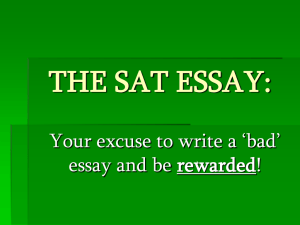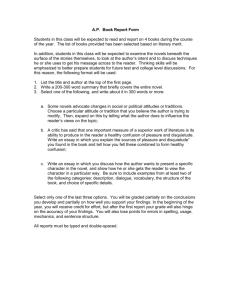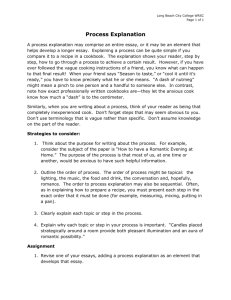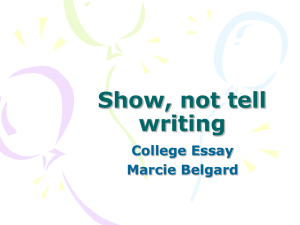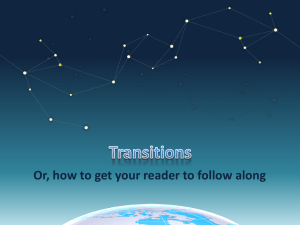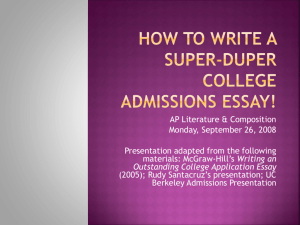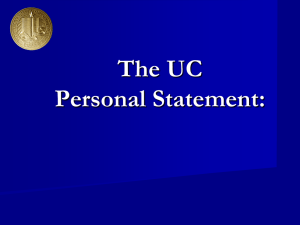POW TIDE PWPT
advertisement
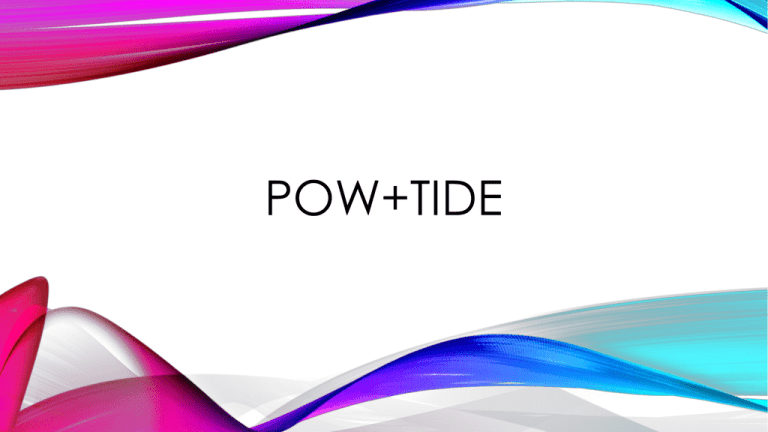
POW+TIDE Pull apart prompt POW + TIDE / LL Organize my notes Write and say more + T- Topic introduction ID- Important details E- End L- Links L- Language (3 or more) P=PULL APART THE PROMPT • What am I being asked to do? • What should I write about? • Circle key words and ask yourself: What am I being asked to write about here? • Suggestion: Turn the prompt into a question that can be answered. O=ORGANIZE MY NOTES • Label paragraphs with main ideas if necessary. • Highlight what is important. • Create a list of categories (Example: A list of comparisons and a list of contrasts.) W=WRITE AND SAY MORE • Begin writing • Where do I start? • Look back at where you “O”rganized your writing. T=TOPIC INTRODUCTION • Restate and respond • Hook your reader • Main idea • Topic sentence • Site reference material • List topics/subjects I=IMPORTANT EVIDENCE D=DETAILED EXPLANATION X3 • EVIDENCE from text (“I”) • Cite specific examples from the texts. • Elaboration (”D”) • Give an explanation of the evidence cited. E = End • Conclusion / Ending • “Sum up” your writing • What did you just write about? L- Links L- Language Links: Use appropriate transitions to clarify the relationships among ideas and concepts Language: Uses formal style, precise language, domainspecific vocabulary; Vary sentence patterns for meaning, reader/listener interest, and style A good informative/explanatory essay has important parts: Informs and educates the audience (avoids “I”, “My” & opinion words) Is interesting to read Includes transitions (For example, However, Not Only, Otherwise, Instead, etc…) Tells the reader the topic or purpose of the essay Provides the reader information about the topic Gives the readers additional details and examples about the topic Demonstrates thorough understanding of the texts Develops topic with textual evidence Elaborates on textual evidence to strengthen examination

